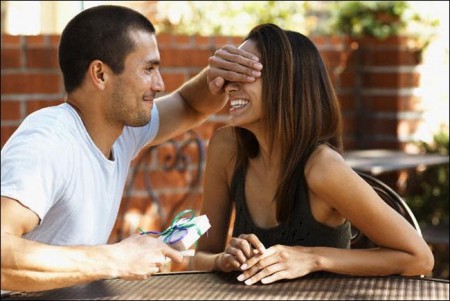No doubt the problem of most concern to most parents during their children’s adolescence has to do with boy-girl contacts. There are practical, down-to-earth parts to this. Parts that deal with behavior and conduct–with how a boy or girl ACTS.
There are other parts to it also. Parts that have to do with how a boy or girl FEELS. Too often we talk about and work with the first part only. For feelings related to the sex drive have long been hard for us to deal with.
As a result, we are inclined to focus on how our children behave in their boy-girl relations. We are inclined to by-pass how they feel. It’s as if we were expecting them to handle their feelings automatically by the attention we pay to their acts. As with other things, however, we do better if we pay attention to both.
At the beginning of the puberal cycle, a small gland–the pituitary gland–located at the base of the brain sends out a secretion called the gonadotrophic hormone. This in its turn sets off growth of the sex glands, the testes in the boy and the ovaries in the girl. It stimulates them to produce sex hormones or endocrines of their own and eventually to manufacture mature sperm cells and egg cells.
The puberal cycle with these internal changes starts long before puberty proper. Though the girl’s first menses ordinarily come between twelve and fourteen, the changes inside her body start anywhere from nine to twelve; sometimes even as early as eight. Though boys ordinarily have their first seminal emission around thirteen or fourteen, the internal changes begin between ten and a half and twelve, in some boys even as early as nine.
As the internal changes progress, the outward changes come. These we notice as we observe our teen-ager’s growth. They proclaim to the world and to the opposite sex that childhood is being left behind. Here, for all eyes to see, finally stands a woman. There stands a man.
The puberal cycle, however, does not stop with puberty. Internal changes and often external growth continue for several years. It is probably a combination of the physical changes, the sight of the opposite sex growing into maturity and the perception of one’s own development that brings the upsurge of sex feelings and the increased interest in sexual concerns.
When boy meets girl in the early teens, hesitance is usual. On her part the girl is giggly and coy. She whispers and titters and has secrets with her girl friends. She seemingly shuts boys out. Perhaps this is because she is thrown together in school and elsewhere with boys her own age. These boys seem “babyish” and beneath her, since they are normally slower to develop. Till about fifteen, they are apt to be smaller. Their beards are pinfeathering and their voices quaver.
With disdain, the girl looks down on them. “That Bob! Those boys! They won’t dance. They won’t do anything!” with a snort. “They don’t know a horse from a cow. They don’t keep their ears clean. They actually smell!”
But give the same girl a chance at some more mature and noble-looking creature, then her interest crops out. “That Roy! Have you seen him? Let’s face it, he’s terrific! He’s six feet tall if he’s an inch. He simply walked away with the class election. I tell you, he rates! Only, do you know? One of the girls said he wanted to kiss her the second time they dated. That’s rushing it too much. But still, let’s face it, he’s cool!”
Nevertheless, if she suddenly finds her Adonis seeking her out, quite unexpectedly she may retreat. Ruth has been dying and sighing to be asked to the dance in the gym by a boy two grades ahead of her. However, when the invitation actually materializes, Ruth turns it down. “I was crazy to go,” she exclaims, “but I couldn’t. I’m crushed. I’ve never had such a bitter disappointment. What happened? Why can’t I go? Don’t forget there’s that tremendous assignment we got in English. Miss Zee’s a mean one. If I don’t get it done, well, you know . . .” lamely trailing off.
On his part, the boy in his early teens characteristically sneers or teases or turns on his heel at sight of girls. George, who is thirteen, says with contempt, “The girls in my class think they’re real cute. They act real conceited and real glamorous. But when you try to talk to them they just ignore you and act so big shot they give you a pain.”
Mike can’t see his older sister for dust. From his thirteenyear-old viewpoint he belittles her attractiveness and doesn’t see why any of the boys want to take her out. But one evening he sticks his head into her room to call her to the telephone and catches her half dressed. In spite of himself, young Mike lets out a whistle. “Oh, boy! Bosoms!” he exultantly exclaims.
Actually both boys and girls are tremendously conscious of the other sex and are reacting with body feelings that frighten them. The boy, seeing the girl of his own age as more of a woman than he is a man, often unconsciously identifies her with “Mother.” The earlier love-rivalry feelings then come rushing. His jeers then serve as self-protection to make himself keep himself away.
Somewhat later when he falls, he usually falls for a girl much older. This still is protection. He knows that “older women” are quite out of sight.
Similarly the girl entering her teens who yearns for an “older man of about seventeen” still holds the picture of an idealized father in mind, so that she is ordinarily her own dictator in insisting for herself that the arm-length policy prevail. She will hang on to the telephone betraying her interest in everlasting conversation about boys at first, and later with them. But she still must keep the distance safely between.
This might be termed the period of avoidance. A pause, as it were, in which to build courage. Some boys and girls seem to skip this period. Some go through it before they reach their teens. But when it exists with its various incompatibilities of boy wanting older girl and girl wanting older boy and the older ones of both sexes looking down on the younger ones, there are resultant barriers which either bother parents or let them breathe a sigh of relief.
Thirteen-year-old Dave’s mother was one of the bothered ones. She was overconcerned with her son’s lack of interest in girls. She arranged for him to go to dancing school. She invited girls over. She surprised Dave with a “gorgeous Valentine party,” and kept urging Dave to “be nicer to girls.”
However, when he crawled inside himself, becoming more morose and truculent, she decided she had better get inside herself for a change, at least for long enough to do some soul searching.
“Yes,”–she came up with a good discovery–“when I was twelve or thirteen, my older brother wouldn’t pay the least attention to me. I was utterly crushed. I see I’ve been identifying myself with the girls Dave neglects; as if I were in their boots, once more being neglected myself. I’ve been thinking of them and not of how Dave feels at all.”
The change that followed in her attitude helped Dave to be franker and more open.
“Girls,” he confided to her, “they’re just impossible.”
“I know.” She nodded, feeling with him at last. “I know they make for a lot of problems.”
“They sure do for boys.”
His mother’s mirroring of his feelings was far more helpful than her earlier proddings. It left him freer, when he became ready, to move ahead at his own speed.
In contrast, some parents try to delay things and are pleased if their youngsters are not concerned with the opposite sex. “He’s got plenty of time to go with girls!” Or “I’m grateful, believe me, that she doesn’t care about boys yet. I’ll have enough trouble on that score later.”
The age at which boys and girls become outwardly interested in each other does vary. So–be watchful and tolerant. And in early adolescence, don’t try either to hold back your child or to push him on in his contacts.
Let your young teenager’s INTEREST IN THE OPPOSITE SEX develop at HIS OWN RATE.
Views: 436



